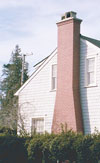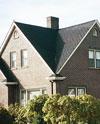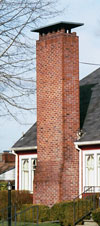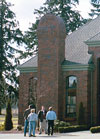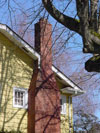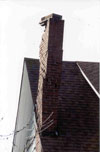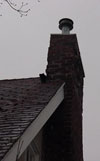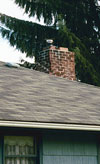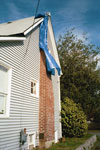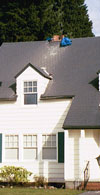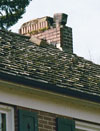Pictures
Chimneys that Survived
Some new - some old and well maintained
All old un-reinforced chimneys
|
Conclusions No masonry chimneys that were built to modern codes, reinforced and strapping to the house failed. Moreover many old chimneys - even tall chimneys - did not fail. In the worst areas of Olympia near the Capitol, where nearly all of the chimneys were old and un-reinforced, far less than half of the chimneys were damaged by the Nisqually Quake. The chimneys that did fail were, by in large, already in poor condition and in need of ordinary maintenance. Several of the chimneys that failed were lined with small metal flues indicating that a gas furnace had been vented into the chimney, and that probably the chimney had been damaged by acid flue gas condensation before the lining was installed. One chimney in particular had grass and moss growing out of the mortar joints. Chimneys that served fireplaces and not furnaces generally faired better.
|
Recommendations For old chimneys that might not have been damaged this time the following preventative measures might be considered:
|

Chimney Seismic Index
Prepared for FEMA by Jim Buckley
